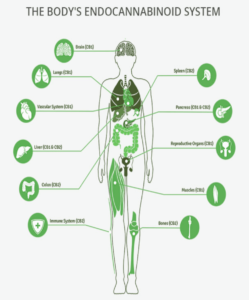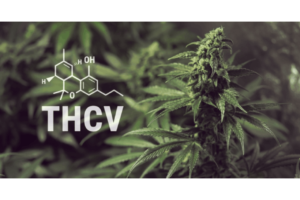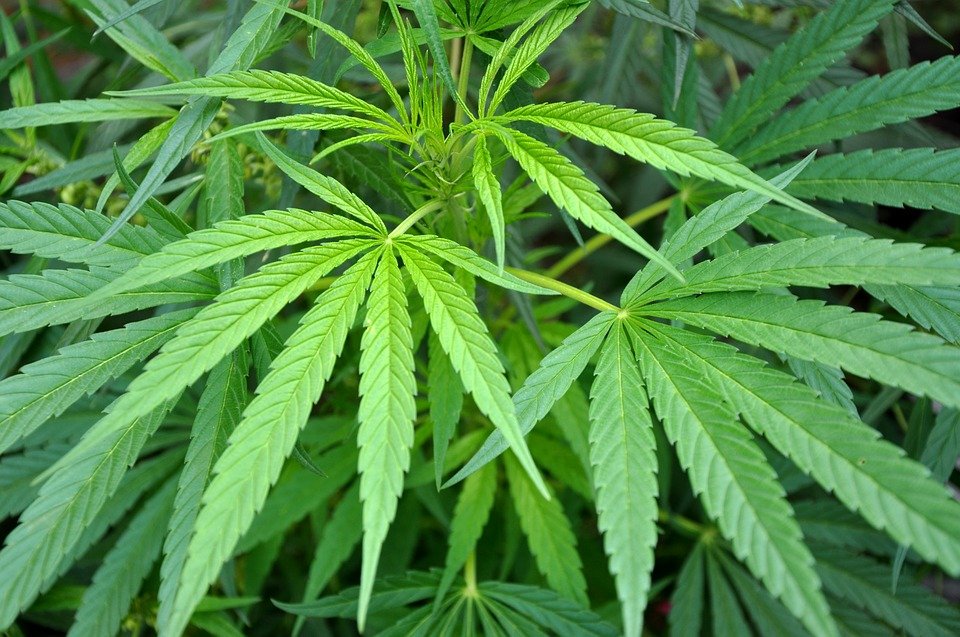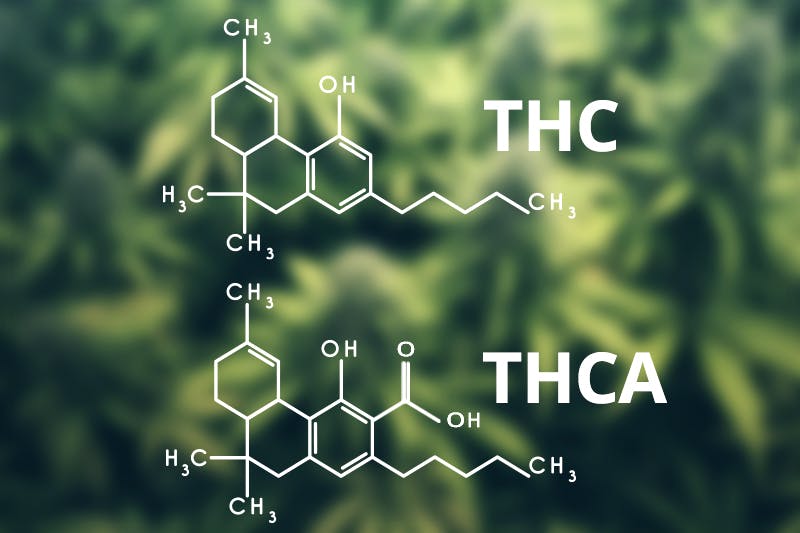HOW TO FIND THE RIGHT MEDICAL MARIJUANA FOR YOU: CANNABINOIDS
Patients are often faced with an overwhelming amount of information when first seeking out a medical marjiuana treatment plan. They may wonder how a certain product, like an edible or tincture, will affect them. In diving deeper, they may find that it is actually the components of the plant used – such as a cannabinoid or terpene – that directly alters their experience. The word cannabinoid refers to every chemical substance, regardless of structure or origin, that joins the cannabinoid receptors of the body and brain and that have similar effects to those produced by the cannabis plant. They are synthesized, developed, reproduced, and utilized in every unit of medicinal marijuana to achieve a desired effect. Cannabis strains are filled with multiple different types of cannabinoids. When consumed, they create an amalgamation of effects on the body. These effects correspond to the variety of healing properties we’ve read about both scientifically and anecdotally.
One individual strain of cannabis can be used to treat many different conditions; consequently, having a basis of how the body registers these bioavailable compounds found within cannabis is pivotal to finding the right plant to fit a patient’s particular needs. It can be difficult to know where to start in regards to getting to know cannabis, and how to use it for medicinal use. Since a medical marijuana card can be approved for a broad spectrum of underlying conditions, diseases, cancers, and other ailments, it is important to note that any combination of cannabinoids can drastically change the medicinal experience of a patient.
THE ENDOCANNABINOID SYSTEM
The EndoCannabinoid System (ECS) in particular plays an integral role in seeking symptom-relieving medications available for purchase on dispensary shelves. It refers to the receptors found throughout our body which bind to CBD, CBN and THC in order to signal that the ECS needs to take action. The effects that result depend on where the receptor is located and which endocannabinoid it binds to. There are 113 unique cannabinoids with healing properties that we currently know of, all of which act in unison with the ESC to provide pain-relieving benefits.

There are two types of receptors: CB1 and CB2, both of which serve distinct functions in a patient’s overall health and well-being. CB1 receptors are primarily found in the brain and central nervous system, and to a lesser extent in other tissues. CB2 receptors are mostly in the peripheral organs, especially cells associated with the immune system. CBD does not directly fit CB1 or CB2 receptors; however, they have a powerful indirect effect that is still being studied.
Research has linked the ECS to the following processes:
- appetite and digestion
- metabolism
- chronic pain
- inflammation and other immune system responses
- mood
- learning and memory
- motor control
- sleep
- cardiovascular system function
- muscle formation
- bone remodeling and growth
- liver function
- reproductive system function
- stress
- skin and nerve function
Cannabinoids are located in the shiny crystals known as trichomes, which are found on the exterior of the cannabis flower. Once ingested or absorbed into the ECS, they fit like a lock and key into existing receptors in our body. Surprisingly, the endocannabinoid system was only recently discovered in 1990; it is a part of the central and peripheral nervous system, and serves to regulate the body, creating homeostasis (the tendency of organisms to auto-regulate and balances their internal environment) and assisting the immune system in several processes.
EFFECTS OF CANNABINOIDS
The effects of cannabinoids may be felt immediately if smoked or vaporized, or within an hour or two if eaten. General effects may include:
- euphoria
- feelings of well being
- spontaneous laughter and excitement
- increased appetite
- dry mouth
- quiet and reflective mood
Medicinal cannabinoids come in a variety of different products. They can be smoked, vaporized, eaten, or topically applied. In their raw form, botanical cannabis can be vaporized for medicinal purposes, as well as synthesized further into oils, transdermal patches, liquids, and oral sprays. Gels have been developed for direct application to the skin for analgesic effects. Although not as popular, IV injections and suppositories also exist to provide higher bioavailability.
In the following index, we will explore the top ten cannabinoids by breaking down what healing properties they represent, and how using them to treat specific symptoms can benefit you as a patient!
THCA
Also known as Delta-9 THCA, tetrahydrocannabinol is one of if not the most popular member of the large cannabinoid group. This compound, when turned to THC, is responsible for the psychoactive effect that is often referred to as “getting high”. The effects on the body can vary from person to person, and generally include an altered perception of time, feelings of relaxation, heightened sensory perception, and increased appetite. THCA (tetrahydrocannabolic acid) is converted to THC via combustion, or heating to a certain temperature. Once converted, THC binds with the CB1 receptor in the body and produces psychoactive effects on users.
Some of the ailments that THC is indicated for use with include (but are not limited to): anxiety, depression, post-traumatic stress disorder (PTSD), glaucoma, inflammation, inflammatory bowel disease, insomnia, irritable bowel syndrome, migraines, multiple sclerosis, muscle spasticity, nausea, pain, poor appetite, reducing opioid use, seizures, symptoms associated with HIV/AIDS, fibromyalgia, amyotrophic lateral sclerosis, cachexia, cancer, Crohn’s disease, Huntington’s disease, hepatitis C, chronic traumatic encephalopathy, sickle cell anemia, Parkinson’s disease, spinal cord disease or injury, terminal illness, Tourette’s syndrome, traumatic brain injury, and ulcerative colitis.
A release of dopamine is also indicated with the cannabinoid, leading to a feeling of relaxation and euphoria. Notably, it also has 20 times the anti-inflammatory strength of aspirin. Although this cannabinoid is mostly known for its pleasant effects, THC can also lead to adverse reactions as well. Side effects of this include an impact on concentration levels (depending on the activity at hand, it can assist in completing familiar tasks while depleting the ability to learn new ones), memory, sensory perception, and movement.
The amount of THC in marijuana matters. Today’s medical-grade cannabis flower/bud and concentrates are much more potent than even that of the 1990’s. For example, the average THC level of dispensary marijuana was about 4% around that time. Today’s vape cartridges and concentrates on dispensary shelves yield a staggering 9.6% THC average, according to the National Institute on Drug Abuse (NIDA). Modern high-potency strains of marijuana will be closer to 15%, nearly four times as strong! Some marijuana extracts can exceed a 50% THC level depending on the product.
THC is stored in body fat and organs (including hair) for three to four weeks. Hair follicle testing may identify THC after even longer periods of time, around 90 days. The FDA has also approved the synthetic THC medication dronabinol (sold under brand names such as Marinol and Syndros), which is indicated for low appetite and weight loss most commonly associated with HIV/AIDS. A drug containing a synthetic substance similar to THC known as nabilone (brand name Cesamet) is also used to treat nausea and vomiting.
CBDA
Cannabolic acid, also known as CBDA, is the acidic precursor to CBD. It is a valuable compound in the treatment of a wide range of conditions, including nausea and vomiting. Juicing raw cannabis flower is one of the default methods of ingesting this cannabinoid. CBDA acts as a strong antiemetic compound, and can be used to limit the drastic effect of chemotherapy and opioid use. It is converted to the more widely known CBD by decarboxylation (the act of heating a substance to combustion, therefore releasing its chemical reactions).
CBDA alone, however, also has its own health benefits, and can be found in any raw cannabis strain that is high in CBD. Similar to CBD, it does not interact with the endocannabinoid system’s receptors. Instead, it activates the 5-HT1A serotonin receptors, which help regulate anxiety, sleep, nausea, anxiety, and mood. Additionally, further research has shown that CBDA may have impressive antidepressant properties that trump those of CBD, due to its effects on serotonin neurotransmitters.
CBD
CBD (aka cannabidiol) has, in recent years, become one of the most popular members of the cannabinoid group, let alone a multi-billion dollar industry built around holistic healing). It is federally legal in the U.S., largely due to the fact that it is the non-psychoactive component of cannabis and has virtually no overdose or addictive potential. Its extracts, tinctures, and infused products line the shelves of supermarkets, dispensaries, and beauty salons alike due to its inadmissible versatility. CBD has a vast application both topically and orally, and has been fashioned into various commodities such as creams, oils, edibles, and patches. It is also the second most abundant cannabinoid in the marijuana plant, second only to THC. It is of the utmost importance to note, however, that research has shown a trace amount of THC must be present in CBD medications or products in order to activate CBD’s powerful healing properties. Without it, CBD’s important role in sleep, anxiety, nausea, and pain treatment is rendered obsolete.
Notably, CBD and its constituents interact with our body unlike any others on the list. While other cannabinoids usually correspond with the EndoCannabinoid System, CBD will link up with brain cells, including opioid receptors and dopamine receptors, to help regulate pain and control behavior. It does not directly activate the brain’s CB1 receptors like THC, which is why a patient doesn’t feel the same intoxicating effects. In fact, there is evidence that CBD inhibits the adverse effects associated with THC by blocking its effects on the CB1 receptors and elevating the activation of adenosine type IIa receptors. Since this in turn decreases the effects of THC on the brain’s hippocampus, CBD can prevent THC from impacting new memory formation.
CBGA
Ahoy, cannabigerolic acid! Without this crucial cannabinoid, there would be no medicinal benefit to cannabis whatsoever. CBGA is the non-psychoactive precursor to all other cannabinoids found in the cannabis plant, acting as a low-affinity antagonist to the brain’s CB1 receptors. It is a phenolic acid that, once heated, is converted to CBD, which is then bioavailable for use by the body. Often referred to as “the mother cannabinoid”, it is the parent of THCA, CBDA, CBCA, and other acid precursors that include A in their names. CBGA research continues to study whether CBGA impacts the CB2 receptors of the brain.
Currently, there is little funding and minimal research on CBGA’s medical benefits, even though it was founded in 1964. An industry occurrence, however, found that this cannabinoid can be biochemically manipulated to form more CBD products. It takes approximately five chemical reactions to happen in the right order for CBGA to take form, and is considered the main building block of all cannabinoids to this day. Juicing raw cannabis flower is one of the default methods of ingesting this cannabinoid.
CBG
CBG, also known as cannabigerol, is another essential cannabinoid that must be present in order for THC and CBD to take place chemically. While most marijuana strains may only contain a trace amount (less than 1%) of CBG, it is crucial to producing the cannabinoids that are sought after for their medicinal benefits. It can stimulate appetite, improve bone growth, enhance sleep by regulating circadian rhythm, and act as an antibacterial and antimicrobial when used topically.
First discovered in the late 1960s, CBG has been touted for its neuroprotective effects and can also work as an antioxidant for the nervous system. Research shows that CBG can help improve motor deficits such as Huntington’s disease and preserve neurons in neurodegenerative diseases. It has also been indicated for inflammation – often associated with painful illnesses such as arthritis, heart disease, diabetes, cancer, and depression – due to its anti-inflammatory properties. Recent studies have provided evidence that patients with inflammatory bowel disease, or IBD, have been benefited by strains high in CBG.
CBG comes from a process called biosynthesis, where one or multiple chemical reactions results in another chemical component. In this case, the components olivetolic acid and geranyl pyrophosphate are combined to create CBGA. Once this cannabinoid is mixed with certain enzymes, it becomes CBCA, CBDA, and THCA.
CBCA
Cannabichromenic acid, or CBCA, is the immediate chemical precursor of cannabichromene (CBC). During the maturation phase of the plant, cannabis produces a wide variety of different compounds, and CBCA is one of the compounds that appears when cannabis flower is nearly mature. It is similar to CBD in that they are not psychoactive; however, CBCA cannot yet be derived from cannabis and its consumption methods are highly limited.
This cannabinoid is a potential treatment for bacterial infections; however, at this time, it is most often utilized by the medical marijuana industry to create CBC, which has been more thoroughly researched. Nevertheless, a study exploring the immunology of infectious diseases found that this acid had a therapeutic value in fighting off Staphylococcus aureus(MRSA) infections. Another notable study is currently being conducted and explores the relationship between CBCA and the nervous system’s TRVP1 receptors. If research into the potential immunological benefits of CBCA continues to deliver promising results, it may one day be recognized as a mainline treatment for MRSA and other microbial infections.
CBC
Cannabichromene, also known as CBC, is often utilized in the treatment of pain. The compound binds well to pain-related receptors and helps to boost the natural production of endocannabinoids in the body. CBC is also relevant to the management of cancer. A study published in the Journal of Pharmacy and Pharmacology studied the effects of cannabinoids in mice with inflammation and skin tumors, and subsequently found that CBC helped encourage new cell growth. Although research is still in the very early stages for this important cannabinoid, a discovery was made that supports the idea of an “entourage effect” – where the different components of cannabis work best when they work together.
CBC activates the CB2 receptor, meaning it “may contribute to the potential therapeutic effectiveness of some cannabis preparations.” CBCA becomes CBC by going through a process called decarboxylation. CBCA is known as a carboxylic acid due to the fact that it contains a carboxyl group, an unstable chemical structure that converts into other structures when exposed to heat. CBC can be isolated and infused into an edible oil called cannabichromene oil, or CBC oil.
CBN
Cannabinol, referred to as CBN or “the sleepy cannabinoid in old weed”, is a non-intoxicating compound that is created when THC ages. It is most known for its medical use as a sedative or sleep aid, although it is also specified as a pain reliever, anti-bacterial, anti-inflammatory, anti-convulsant, bone cell growth stimulant, and appetite stimulant. When THCA breaks down into CBN, it can be used in the management of conditions like Lou Gehrig’s disease.
High-CBN strains are more likely due to storage than intended potency. As THC degrades over time, it is converted into CBN. Though far less known than CBD or THC, CBN has an impressively long list of potential medical uses. With patients who suffer from insomnia, CBN is not only potent, but also easy to obtain (as long as you have access to cannabis). If it becomes a challenge to find a strain high in this cannabinoid at a dispensary, your best bet is to shelf some raw botanical cannabis in a non-airtight container and let it sit for a month!
THCV
Tetrahydrocannabivarin, or THCV, is similar to THC and has strong anticonvulsant properties as well as neuroprotective properties. It can be used to suppress appetite, and although a trace amount is found in cannabis, could be an effective component of future weight loss programs and therapies by controlling glycemic levels. THCVA (tetrahydrocannabivarin acid) is one of the intermediary forms that the cannabinoid THCV takes as it develops, and research is underway for the potential functionality of THCVA for a variety of consumer and industrial purposes.

THCV acts as an agonist to some of THC’s effects in small amounts; however, this effect is reversed when THC is indicated in larger doses. Although THCV does share a lot of THC’s potentially intoxicating effects, there is too little of it to create a mind-altering experience. If a patient can find a strain with large amounts of THCV, the effects are akin to a clear-headed psychedelic high that provides feelings of euphoria and energy in short bursts.
CBDV
Cannabidivarin, or CBDV, is similar to CBD for more than the fact that it is also non-intoxicating. It has anti-nauseating properties, and despite being slightly less potent than CBD, can also be used in the management of epilepsy. CBDV is most often present in high-CBD strains and plays a role in the modulation of pain, as well as in its transmission. More specifically, CBDV acts on the central nervous system to control spontaneous convulsions by inhibiting the discharge and producing hypnosis.
Cannabidivarinic acid, when exposed to relatively low heat, becomes CBDV. Without it, the cannabidivarin cannabinoid would not be bioavailable for the reduction of epileptic fits. Its neurological effects continue to be studied.
APPLYING THIS INFORMATION IN THE DISPENSARY
Your local budtenders will be highly knowledgeable when it comes to answering questions regarding all of these cannabinoids. We encourage you to ask questions and lay out your symptoms so your budtender can align the best strains mapped to your needs!
Stay tuned for information on how to apply this knowledge when visiting a dispensary, and what questions to ask when looking for a particular product in an upcoming blog!
To learn more about the cannabinoids and anything else you might want to know about medical marijuana, including how to get your license, be sure to visit https://oklahomacard.com/.
Get in touch with us!
710 Card
211 North Broadway St. Louis Missouri 63102
(508) 606-6741
Find us on social media:








